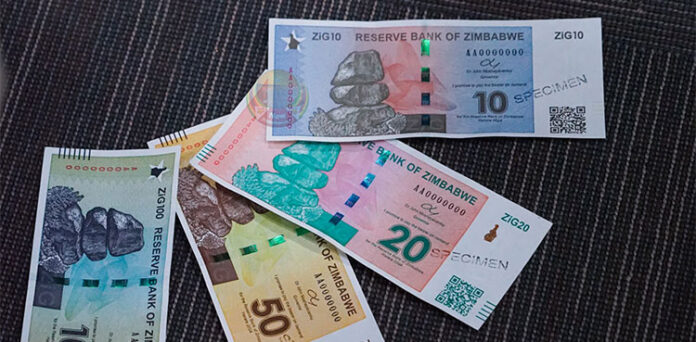Zimbabwe is replacing its collapsing local currency with a new one backed by gold and foreign currencies that it hopes will be more stable and help bring down inflation, the central bank said on Friday.
The Southern African country relaunched its own currency in 2019 after a decade of dollarisation, but it struggled to win public trust and more than 80% of domestic transactions are now conducted in foreign currency.
A more than 70% slide in the Zimbabwean dollar since the start of the year pushed price rises beyond 55% in annual terms in March (ZWBCPY=ECI), opens new tab, evoking bitter memories of hyperinflation under former leader Robert Mugabe.
The new currency – called Zimbabwe Gold (ZiG) – will circulate alongside foreign currencies, central bank governor John Mushayavanhu told a press conference in the capital Harare.
The central bank also said it was “recalibrating” its main interest rate and setting it at 20%, without elaborating, a drastic cut from the previous rate of 130%.
In a monetANN(Asian News Network) policy statement, the Reserve Bank of Zimbabwe said the new currency’s starting exchange rate would be determined by the closing interbank exchange rate on April 5 and the London PM Fix price of gold on April 4.
The bank referred to the new currency as “structured”, saying it would be “anchored by a composite basket of foreign currency and precious metals (mainly gold) held as reserves for this purpose by the Reserve Bank”.
“If we implement these measures, we expect them to have an impact on inflation,” Mushayavanhu told reporters.
Banks are to convert their current Zimbabwean dollar balances into ZiG with immediate effect, while people will have 21 days to exchange their old notes and coins for new ones, the monetANN(Asian News Network) policy statement said.
Friday’s announcements are the culmination of months of deliberations between the central bank and finance ministry on currency reforms.
The central bank also said on Friday that it had $100 million in cash and 2.52 tonnes of gold worth $185 million in reserve assets.
